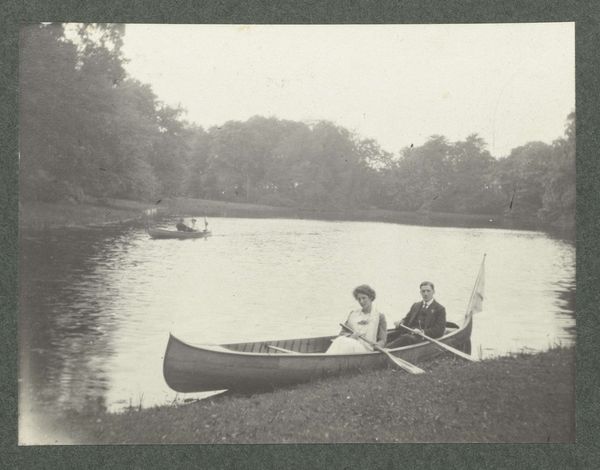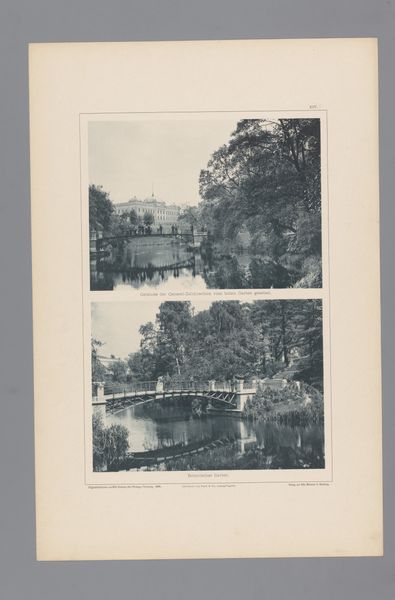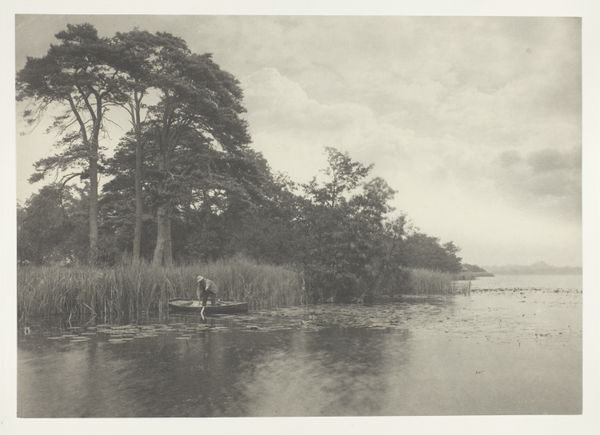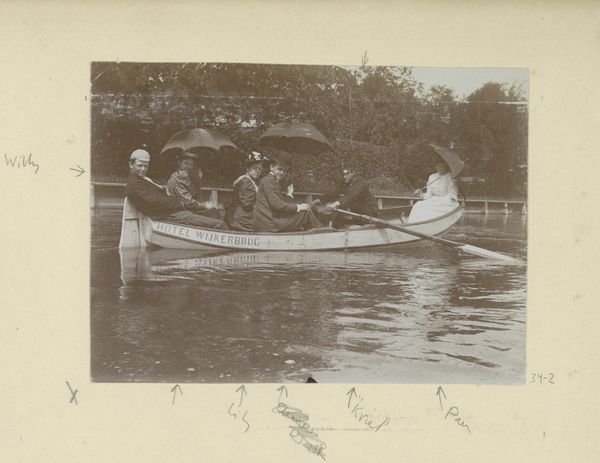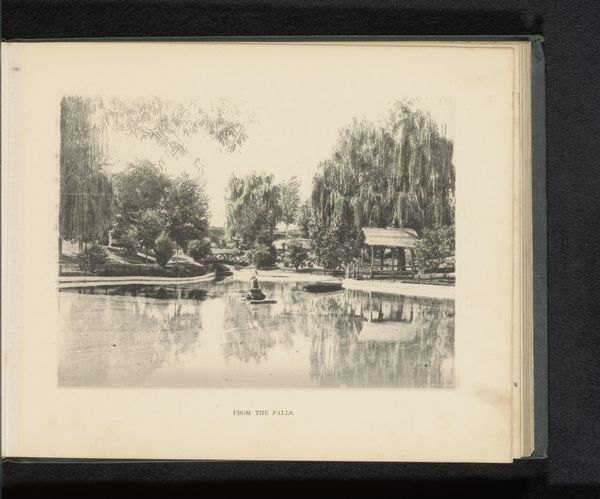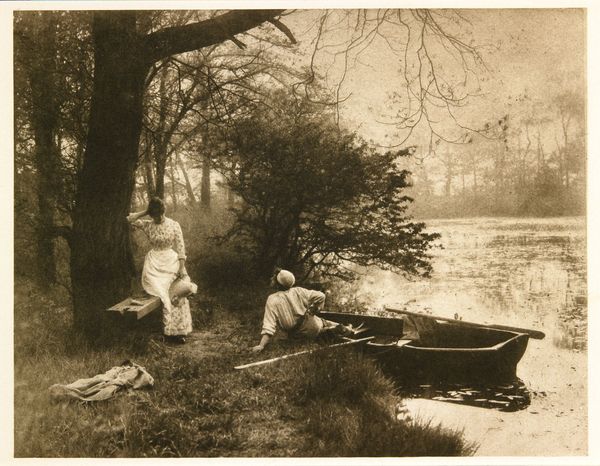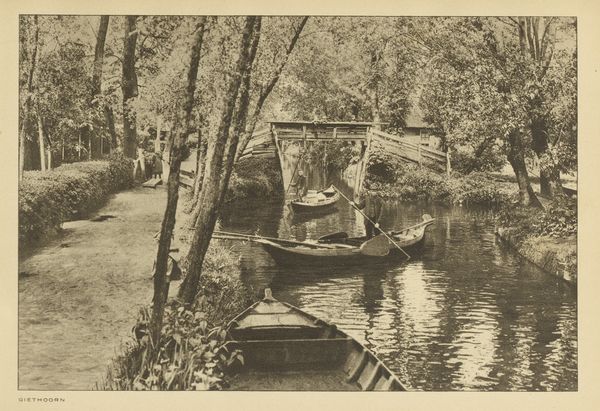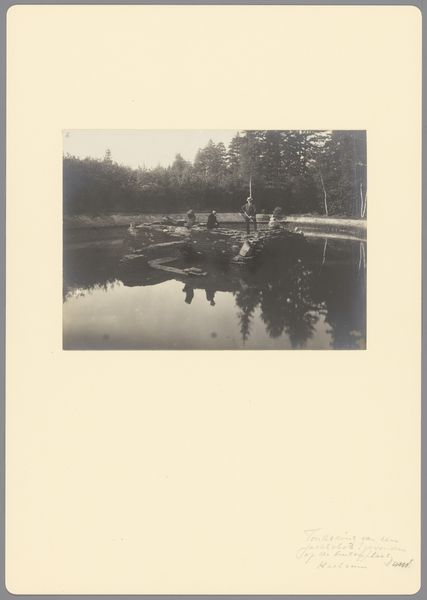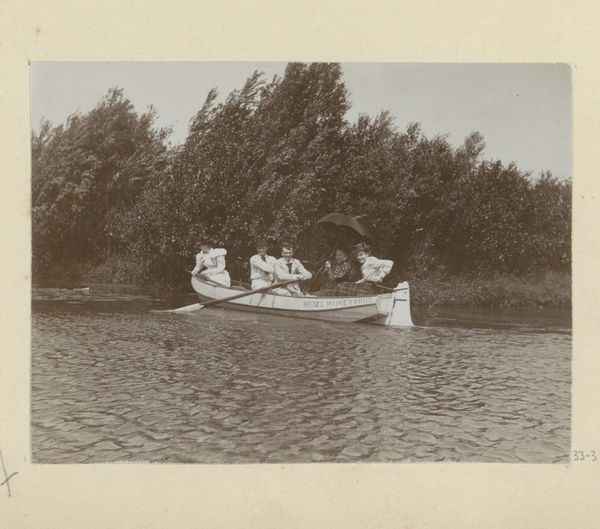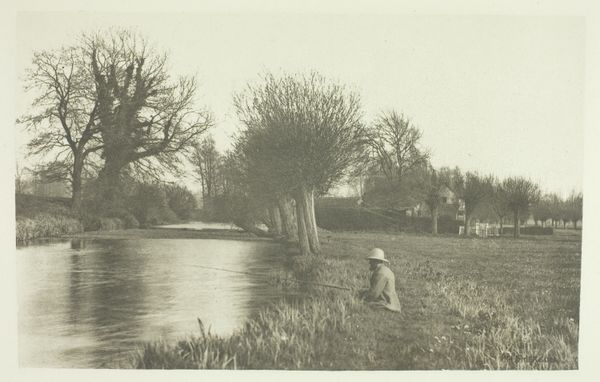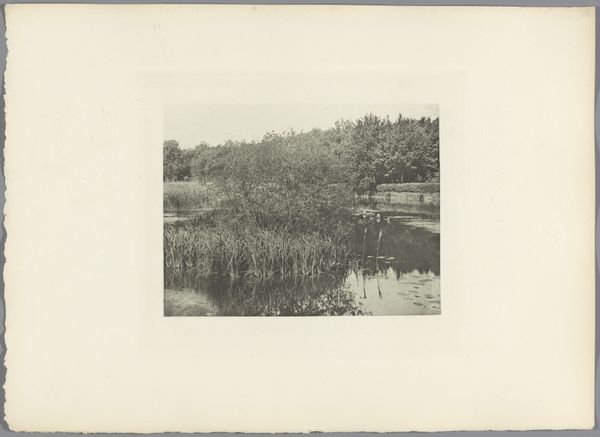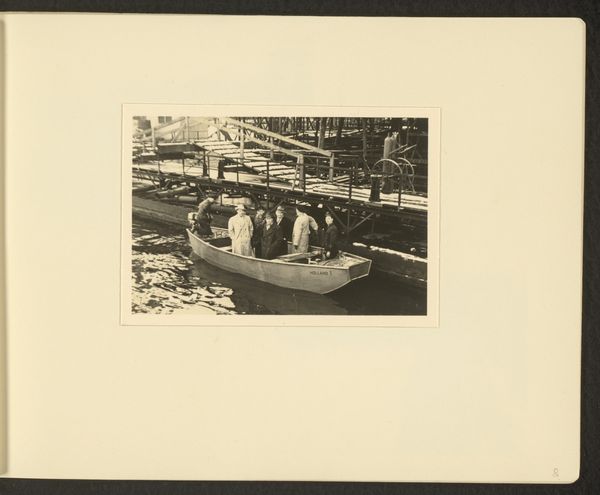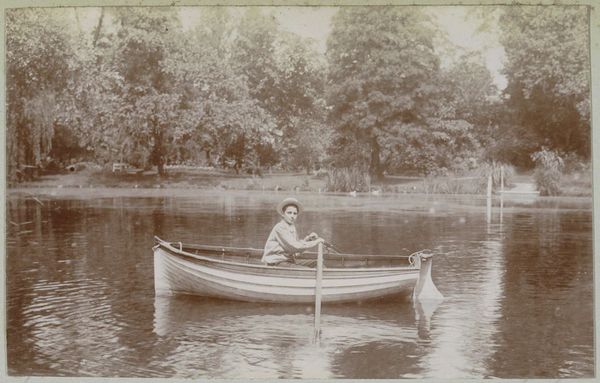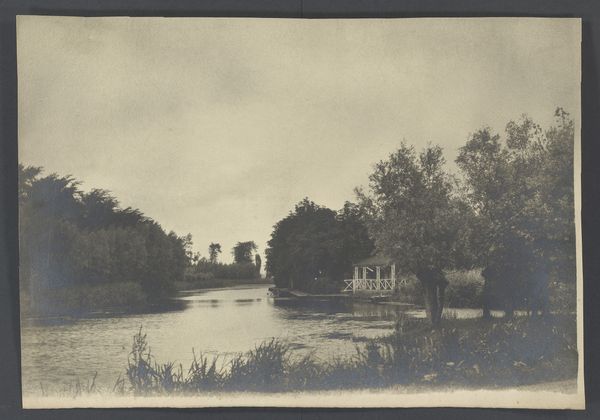
Dimensions: height 196 mm, width 174 mm, height 280 mm, width 207 mm, height 301 mm, width 209 mm
Copyright: Rijks Museum: Open Domain
Editor: This is "View of a Country House from the Water" a gelatin silver print by James Craig Annan, from around 1910. It’s quite striking. The reflection of the house on the water is beautiful and hazy, yet the figure in the boat seems so grounded and present. What's your take on it? Curator: Well, it speaks volumes about the construction of leisure and class identity at the turn of the century. Annan, influenced by Pictorialism, intentionally softened the focus to evoke a sense of timelessness and escape, but this very aesthetic was available primarily to the affluent. What does the prominent placement of the country house and its reflection suggest to you? Editor: Perhaps it’s emphasizing their wealth, their permanence? That the house looms large, even reflected? Curator: Precisely. Photography, particularly Pictorialism, was attempting to gain acceptance as ‘high art’ at the time. Do you think the deliberate aesthetic choices here help achieve that, and if so, how might that goal reflect the biases of institutions and the art market? Editor: I see, so it’s not just a pretty picture; it's reinforcing a certain social hierarchy. The soft focus aesthetic maybe validated photography as art but simultaneously catered to, and mirrored, the sensibilities of the upper classes. Curator: Exactly. It is about constructing an image, not just capturing reality, and these constructions have social implications. How does understanding this change your perspective on the image? Editor: I think it gives it a new layer of complexity. It moves it from a simple landscape to a statement about society at that time. Thanks! Curator: Indeed, understanding the socio-political context really transforms our viewing experience.
Comments
No comments
Be the first to comment and join the conversation on the ultimate creative platform.
